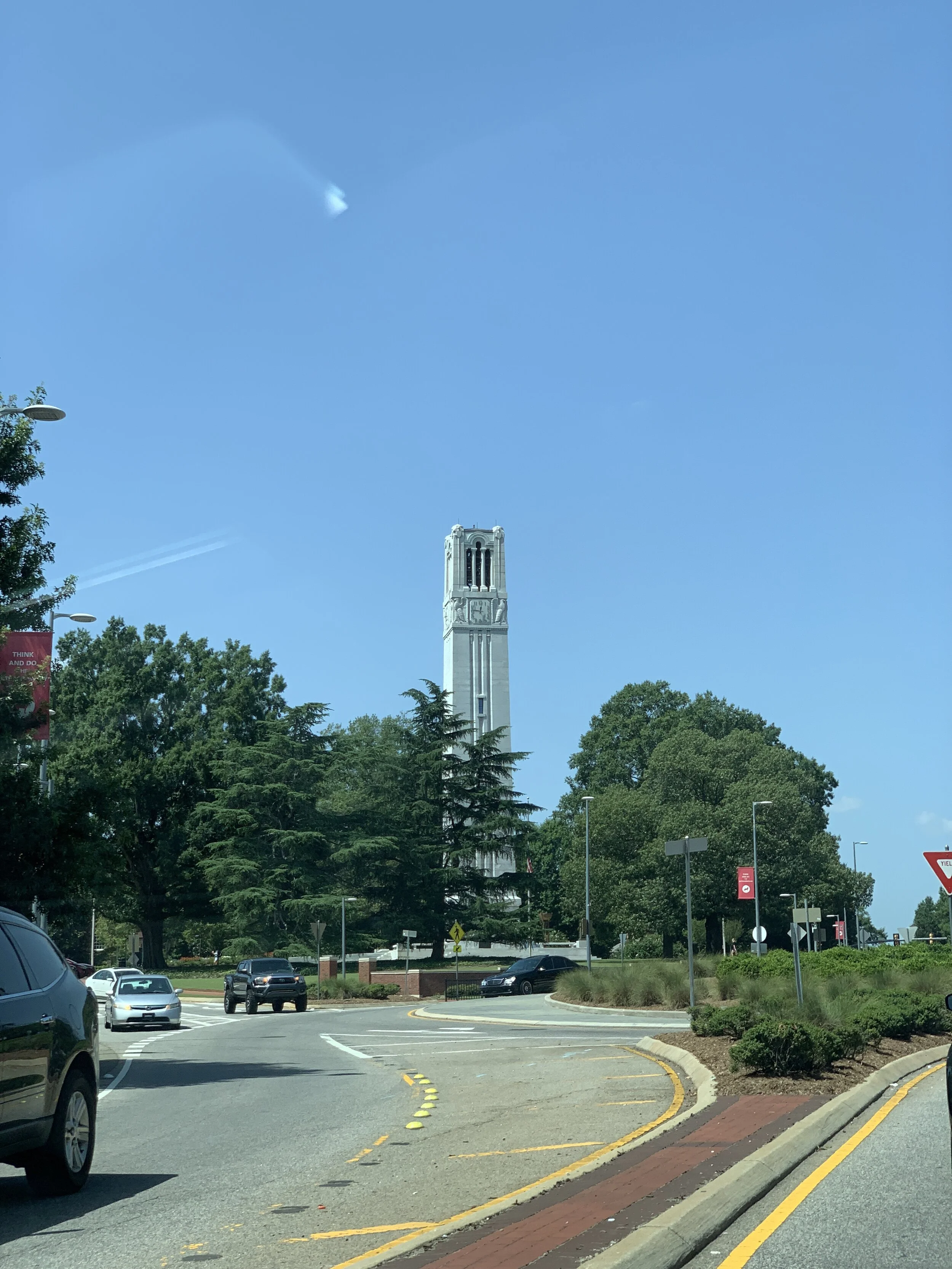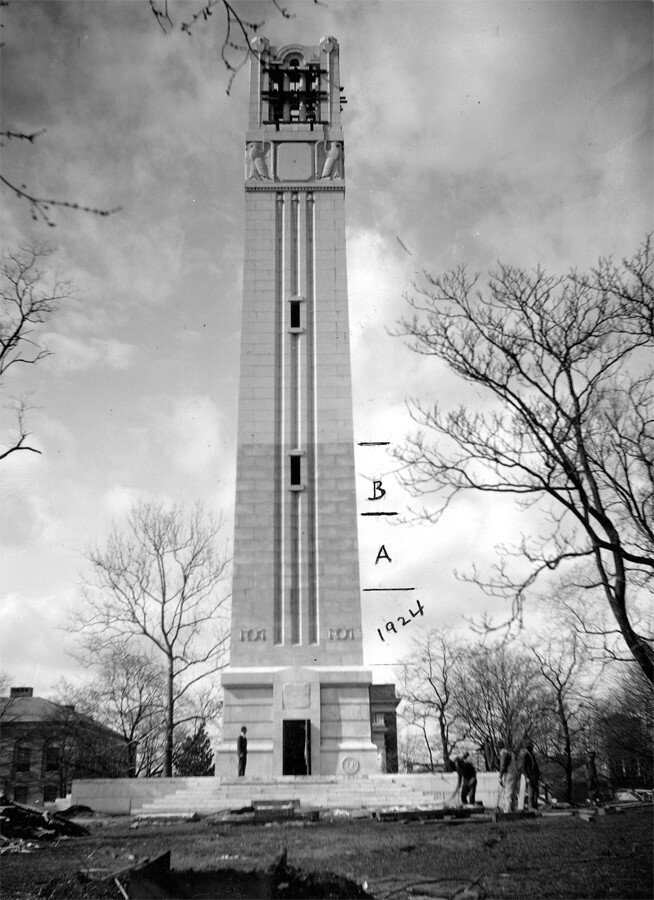The Memorial Belltower
09.07.2021
Pencil on 80 g/m^2 paper, 148 x 210mm (A5).
Drafting mechanical pencil with 0.5mm HB lead. Pentel Hi-Polymer eraser.




Last week I was finishing up the Piping Plover, and had nothing in mind for the next sketch. I did a lot of that first drawing at a coffee shop where I’ve been studying, which happens to be on Hillsborough St. Driving up that street one afternoon, I passed the Memorial Belltower. The sky was a cloudless, placid blue, and it contrasted well with the deep greens of the surrounding trees. I *very carefully* took a picture through my windshield, hence the reflection on the left. Instead of using art pencils, I just used a 0.5 mm drafting pencil for everything, giving it a decidedly coarser look. Although they’re nearly the same size, the Plover was much sharper in detail.
I like to give some context around the subject of each drawing, so I’ll explain a little about NC State’s belltower. Before this, all I knew was that it was kind of the symbol of campus, and it’s on the chancellor’s seal. I was ready to read some boring history (like that a wealthy alumni donated the money to build the tower or something), but the reality turned out to be much more interesting: It involves doughnuts, a significant typo, and digital vandalism.
An idea for a tower honoring alumni killed in WWI was proposed in a letter from Vance Sykes, who graduated in 1907. A committee was soon formed to take on the project as the idea of a monument gained traction on campus. A civil engineering professor named Carroll Mann, for whom Mann Hall is named, headed the committee. The design that was approved was a 115-foot-tall granite belltower. Construction began in 1921, and a whopping 18 feet (or 15.7%) of the tower was completed before funding ran out. By 1924, enough money had been raised to build 10 more feet. Of course at this point the Great Depression hit, and it would be another 11 years before the remainder of the money would be obtained from a Work Progress Administration grant (an agency formed from Roosevelt’s New Deal policies) and additional student pledges. It was finally complete in 1949, with the cost totaling $150,000. Because of the intermittent construction, there is a noticeable color change about a third of the way up. A similar situation to the Washington Memorial in DC.
So far this is all pretty standard stuff. At some point after its dedication, it was found that one of the names on the memorial plaque was wrong. George L. Jeffers, a 1913 graduate, had been on the list of alumni killed in action… but he wasn’t. He had been seriously injured but recovered, and through some miscommunication his name was included. While I would like to think that one of his frat bros reported his name as a prank, and no one bothered to check the list, it seems that his family and then the committee actually believed he had been killed in Europe, before they received the undoubtedly miraculous news of the contrary. Unfortunately the names were engraved in stone, so naturally the solution was to change the name to George E. Jefferson, who exists only to clarify that George L. Jeffers had not in fact died during the war. This imaginary person has come to represent and honor all the unknown soldiers who were killed in action.
So what do doughnuts have to do with this iconic structure? Enter the Krispy Kreme Challenge. The opening quote from their site says it all: “2400 calories, 12 doughnuts, 5 miles, 1 hour. The mantra of the Krispy Kreme Challenge epitomizes the test of physical fitness and gastrointestinal fortitude.” If my math is correct, 5 miles and a dozen doughnuts do not cancel out— you might as well eat like 5 doughnuts to simulate the calories you won’t have burned off.
Other fun facts?
In 2009, lightning struck the tower and blew off a capstone (one of the 4 points at the top).
If you take 5 minutes to eat a dozen doughnuts, then you’ll have to run an 11 minute mile to complete the race. The winner of the first group (Ben Gaddy) completed the race in 34 minutes and 27 seconds. Assuming he took 5 minutes to eat, he would have ran 5:54 second miles on average.
The Belltower isn’t nearly the tallest structure on campus— it’s shorter than D.H. Hill Library by ~39 ft, although it is ~27 ft taller than Hunt Library. If you’re a fan of obscure units of measurement, you may enjoy learning that the tower is 1.74e-1 furlongs, 3.5e10 nanometers (and by extension about 3.5e11 hydrogen atoms), 2.34e-10 AU (meaning it would take 4.27e8 Memorial Belltowers to reach the sun), and 20.6 smoots tall.
Thanks for reading!
Sources
The Memorial Belltower, The Krispy Kreme Challenge, The Memorial Bell Tower and the Strange Case of "George Jefferson", Mann, Carroll Lamb, Sr., 1877-1961
